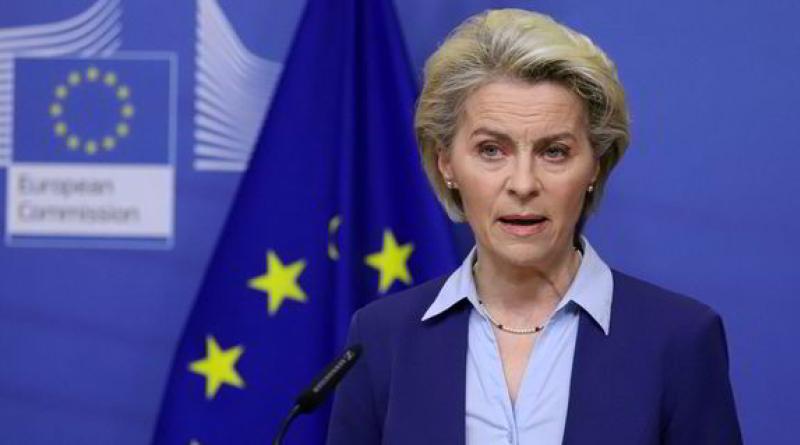EU nails down crucial rules over renewable 'additionality' for green hydrogen

New regulations to allow the monthly correlation of green power supply with H2 production until end of 2029, but hourly after that
The long-awaited Delegated Act setting out definitions for renewable hydrogen was finally published by the European Commission today (Monday), providing the certainty required by producers and investors that the H2 they manufacture can be sold and traded as “renewable” within the EU.
Planned EU subsidies for green hydrogen production could also not move forward until the definitions are in place.
The key — and most controversial — decision has been how to ensure that green hydrogen production via electrolysers does not use renewable energy that would otherwise have been used to provide zero-carbon electricity to the grid — a concept known as “additionality”. The fear has been that fossil-fuel-fired power would be needed to replace the green electricity used for H2 production, and thus push up greenhouse gas emissions overall.
It was therefore widely accepted by both industry and climate campaigners that all renewable electricity used to produce green hydrogen would be new.
This additionality principle has now been defined as renewable energy projects that “came into operation not earlier than 36 months before the installation producing the [H2 or its derivatives]” — defined by the EU as “renewable liquid and gaseous transport fuels of non-biological origin”, widely referred to as RFNBOs.
“The reason for this derogation is that the planning, permitting processes and installation of new additional renewable power takes time and could result in delays in the roll-out of electrolysers and limit the potential to create economies of scale,” the commission explains.
It also introduces a “transitional phase” for first movers, as green hydrogen projects that come into operation before the end of 2027 will be exempt from the additionality rule until 1 January 2038.
But perhaps the bigger question was how to proceed at times when the wind wasn’t blowing and the sun wasn’t shining. Could producers use grid electricity — which may have been produced using gas- or coal-fired generation — during these periods and then supply equivalent amounts of renewable energy back to the grid at a later date in order to compensate? And under what circumstances would this be allowed?
After all, the more hours an electrolyser is in use, the cheaper the levelised cost of the hydrogen produced.
The European Commission stated in an earlier draft of the Delegated Act last year that it would require an hourly correlation between renewable electricity supply and usage — in other words, producers must prove every hour that the power being used by their electrolysers came from new renewable source, thus making it extremely difficult to use grid electricity.
But the H2 industry, led by trade bodies Hydrogen Europe and the Renewable Hydrogen Council, said this would be unworkable and drive up the cost of green H2 in the EU, and the European Parliament vetoed the hourly correlation in September last year, outraging some climate campaigners and green-minded companies.
The trade associations campaigned instead for a monthly correlation of renewables supply with H2 production.
The European Commission has reached a compromise between the two positions — monthly correlation will be allowed until 31 December 2029, and thereafter only hourly correlation will be acceptable. However, a review will be carried out in 2028 on the introduction of hourly correlation, so it might never happen.
“In a phase-in period, renewable hydrogen producers are allowed to match the production of renewable power generation and their associated renewable hydrogen production on a monthly basis,” says the commission.
“In other words, renewable hydrogen producers can run their electrolysers at any hour as long as the total amount of renewable electricity consumed corresponds to the total amount of renewable hydrogen produced within that calendar month of the year. This will allow renewable hydrogen producers to deliver a constant stream of renewable hydrogen to their clients, especially in those cases where no hydrogen infrastructure or storage options are available yet.”
And in another compromise, the Delegated Act says that member states can begin to apply hourly correlation from 1 July 2027, “following a notification to the Commission”.
This can be achieved by renewable electricity generation directly connected to electrolysers, or via renewable energy power-purchase agreements — thus allowing green electricity generated elsewhere on the grid to count towards a developer’s hydrogen production even when not directly connected.
Geographical correlation and imports
There is also a rule for “geographical correlation” to ensure that, for instance, solar power in southern Italy cannot be used to produce renewable hydrogen in northern Sweden.
The act states that the electrolyser must be in the same “bidding zone” as the renewable energy produced, which is defined as the largest geographical area (often national boundaries) within which market participants are able to exchange energy without capacity allocation (ie, energy imported from outside the zone).
“Bidding zones are designed to avoid grid congestion within the zone. To ensure that there is no electricity grid congestion between the electrolyser producing renewable hydrogen and the installation generating renewable electricity it is appropriate to require that both installations should be located in the same bidding zone.”
These rules will equally be applied for green hydrogen imported into the EU and enforced through certification schemes.
When additionality is not required
There also some circumstances in which additionality is not required and existing renewable energy projects can produce green hydrogen and derivatives such as ammonia — primarily, when more wind and solar power is being produced than can be consumed by the grid.
These “imbalance settlement periods” require renewable energy producers to stop sending electricity to the local network, and are often paid by the authorities for curtailing their power in this way.
So instead of wasting this green electricity, and adding to the cost of grid balancing, it can be used to produce green hydrogen, but this would require “evidence from the national transmission system operator”.
Additionality is also not required if green hydrogen production is in a bidding zone that has seen more than 90% of its electricity provided from renewable energy in the previous calendar year, or has an average emission intensity for power production of less than 18 grams of CO2-equivalent per megajoule.
In these geographical areas — currently limited to Iceland and Norway in Europe, which are both outside the EU — grid electricity can be used to produce green hydrogen, but this will be limited to a maximum number of hours in each calendar year.
Rules for carbon-containing H2 derivatives
A second delegated act was also published to establish allowable greenhouse gas emissions for RFNBOs produced from green hydrogen and captured carbon, such as methanol and synthetic methane or kerosene.
“RFNBOs will only be counted towards EU's renewable energy target if they have more than 70% greenhouse gas emissions savings compared to fossil fuels, which is the same standard that applies for renewable hydrogen produced from biomass,” the Commission says.
What about the nuclear hydrogen row?
Two weeks ago, France and eight other EU member states wrote to the European Commission to call for “low-carbon” hydrogen — made from nuclear energy or possibly fossil gas with carbon capture and storage (ie, blue H2) to be classed as renewable — with Germany fiercely opposed to the idea.
A compromise on this also appears to have been reached, according to a European Commission note accompanying the Delegated Act, with separate rulings on low-carbon H2 due by the end of next year.
“Under the Commission's proposal, a methodology for assessing greenhouse gas emissions savings from low carbon fuels will be set out in delegated legislation by 31 December 2024,” it says.
‘A gold standard for greenwashing’
The Delegated Act has already been labelled “a gold standard for greenwashing” by the climate group Global Witness.
“Fossil gas and coal-fired electricity will be used to produce green hydrogen when the supply of renewables is not sufficient... [and] green hydrogen will be allowed to be produced from existing renewables capacity, drawing renewable electricity from the grid which will be replaced by more electricity from fossil gas and coal,” it said in a statement.
The European Parliament and the 27 member states, acting through the European Council of ministers, now have two months to accept or object to the newly published Delegated Acts.
“Their scrutiny period can be extended, at their request, by two further months. They do not have the possibility to amend the Commission's proposals,” the commission says.
This article first appeared on Hydrogen Insight





